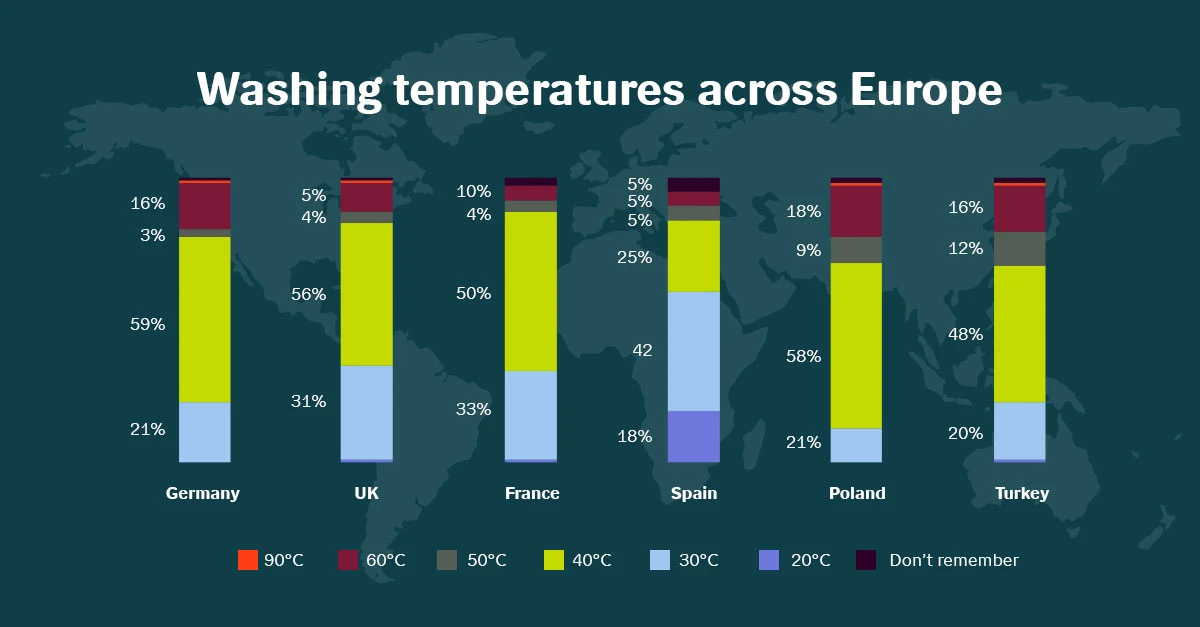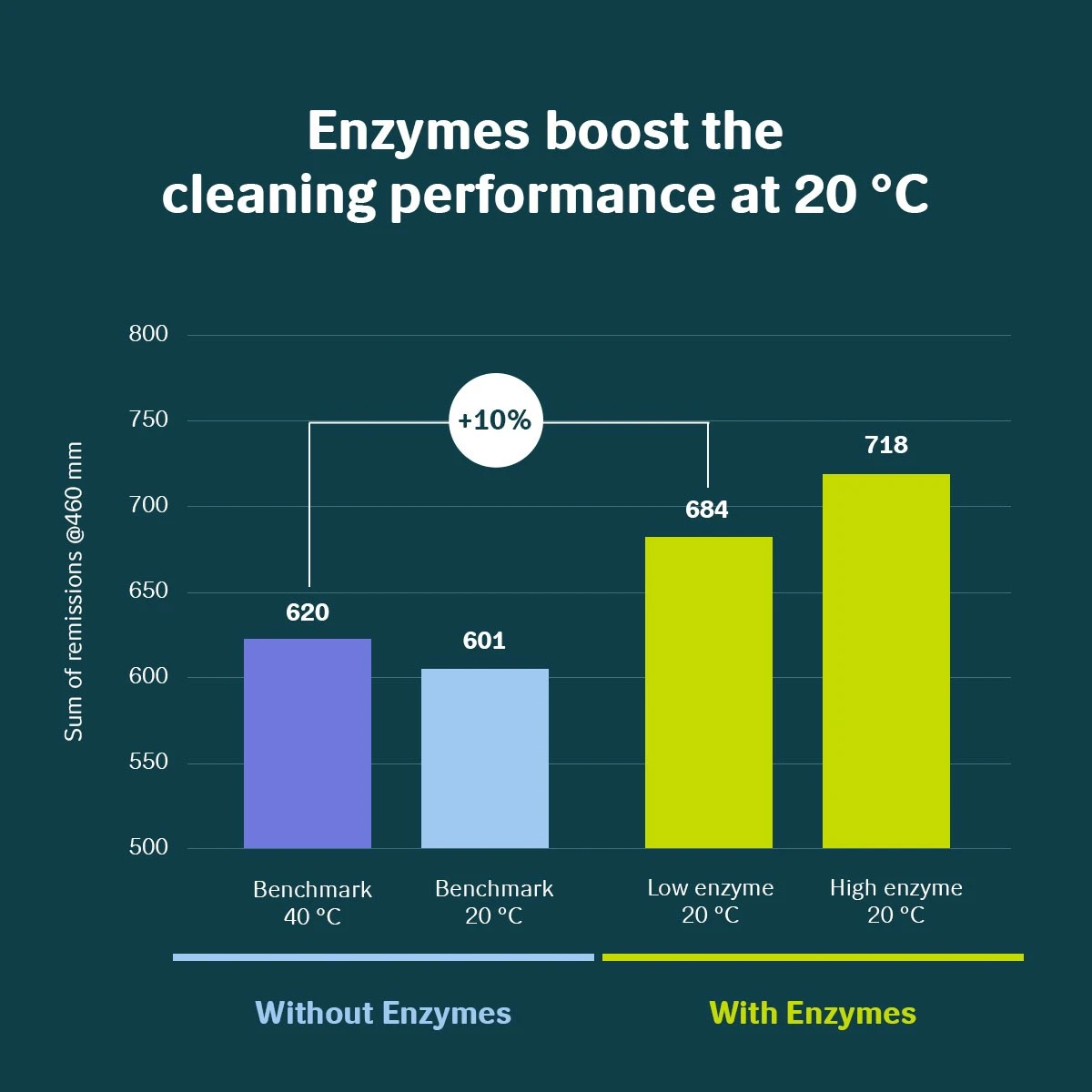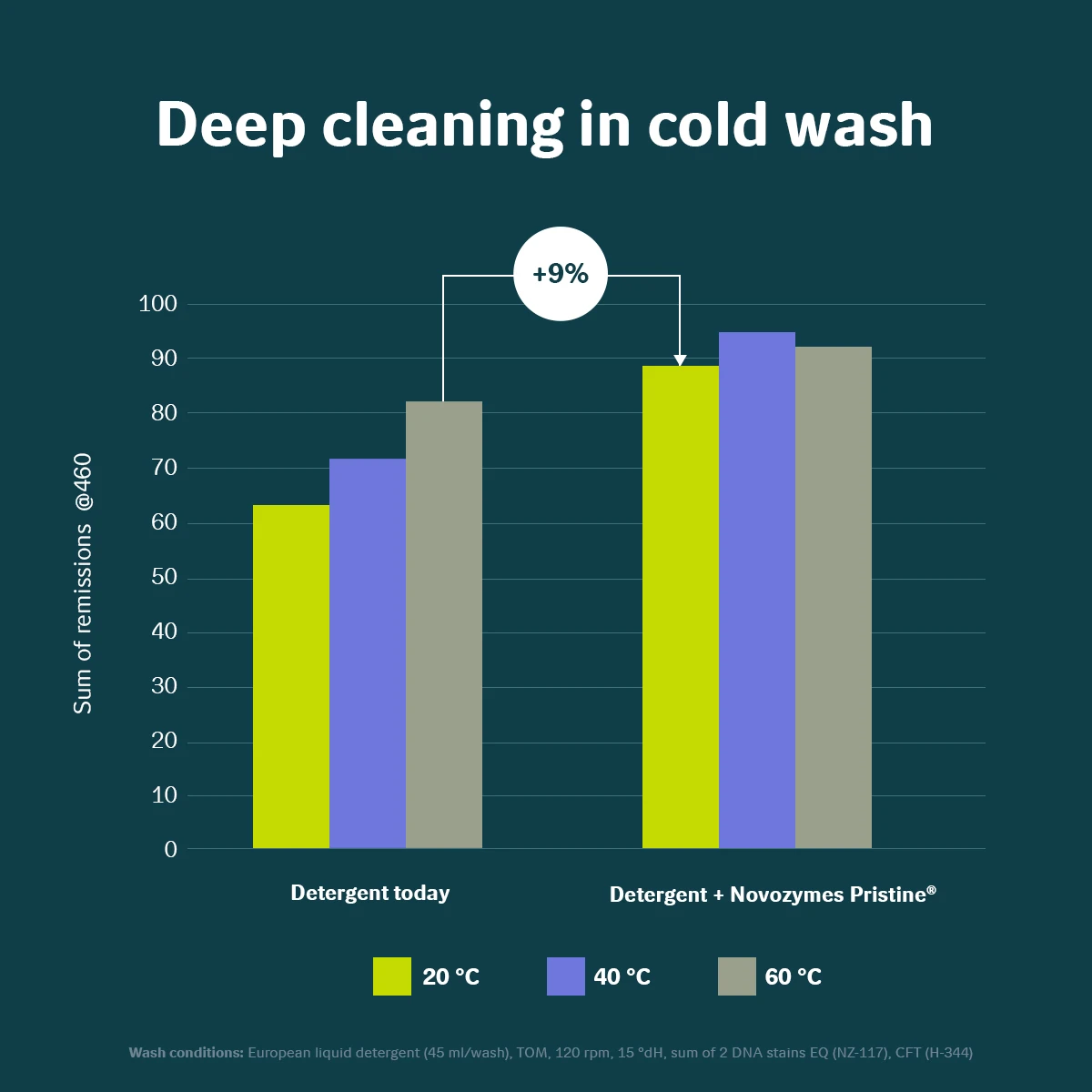Nearly two-thirds (63%) of Europeans mainly wash at temperatures above 30°C. (Source)
While it has always been more expensive to wash at higher temperatures, a one-year increase of roughly 40% in Europe’s energy prices is making the impact of wash habits more painful. Consumers are becoming more aware of how wash temperatures affect their wallets and are open to changing their habits to save money.
The average European household does 3.2 loads of laundry per week. Calculating only the savings due to the heating of water, not washing time, the region could save nearly 1.6 billion Euros per year – simply by decreasing wash temperatures from 40°C to 30°C. (Source) It’s worth noting that this is based on electricity prices from the second half of 2021, not 2022, when prices further skyrocketed.
Lowering the temperature to 20°C would, of course, mean consumers could save even more.
Your window of opportunity is open NOW
As Filip Hoffmann-Häußler, Head of Home Care Research at Euromonitor International, cautions in a recent opinion piece: “The link between temperature and energy use . . . needs to be driven home now.”
Analysts forecast that electricity and gas prices will remain high throughout 2023 and 2024 (Source). So, new consumer habits based on reducing energy use via low-temperature washing will continue to give long-term savings for consumers. The longer those habits are reinforced by high prices, the more likely they are to become engrained as a default when doing laundry even when the economy improves.
Why are some consumers reluctant to decrease wash temperatures?
Even the promise of significant savings won’t lure consumers if they don’t believe their detergent will perform at a lower temperature.
A 2021 study of the laundry habits of 12,000 European consumers showed that nearly half (47%) said they did not wash at lower temperatures because they weren’t confident their laundry would be clean. Of those same consumers, 39% said they were concerned about the ability of a colder wash to remove stains, and 21% said they washed at warm or hot temperatures purely out of habit.
As part of defining what “clean” means, our own research shows that 40% of European consumers frequently experience reoccurring malodor from sweat and body grime as a recurring laundry challenge. (Source)
And, about 50% report that even though their clothes look clean, they still smell – a challenge some consumers try to fight with higher wash temperatures.
Has the COVID-19 pandemic driven high temperatures? While there was much discussion early in the pandemic that wash temperatures would go even higher, Euromonitor’s Hoffmann-Häußler says survey data do not support this.
Enzymes safeguard detergent performance across temperatures
Most stains (including foods, body grime, and sebum) become harder to clean at cold temperatures, and many detergents today aren’t optimized towards these tough conditions. Consumers are therefore left with residual dirt and odors, or they’re forced to rewash items to achieve a complete clean.
A winning detergent must be able to consistently perform across temperatures, including in cold wash, to meet consumer expectations. As P&G pointed out recently in POLITICO Europe, enzymes are a key enabler of low-temperature wash performance.
Since many common stains in Europe are enzyme sensitive, enzymes can close the performance gap that otherwise occurs when consumers decrease wash temperatures. In fact, the right enzymes can even increase detergent performance at lower temperatures compared to higher wash temperatures with a non-enzymatic detergent.
Fig. 1 shows how lowering temperatures has an impact on the stain removal power of a detergent. This drop in temperature can be “closed” by adding enzymes to a detergent. This means that the detergent performs as well at 20°C with enzymes as it does at 40°C without enzymes.
Enzymes can also enable a deep, hygienic clean. Novozymes Pristine®, for example, provides a hygienic deep clean, removing the body grime that traps malodor throughout the temperature spectrum.
Fig. 2 shows the impact of removing extracellular DNA (a key sticky component of body grime) across temperatures in a European detergent, both with and without Pristine®. At cold temperatures, even down to 20°C, the detergent with Pristine® outperforms the current detergent and can even beat the performance of the detergent alone at high temperatures.






